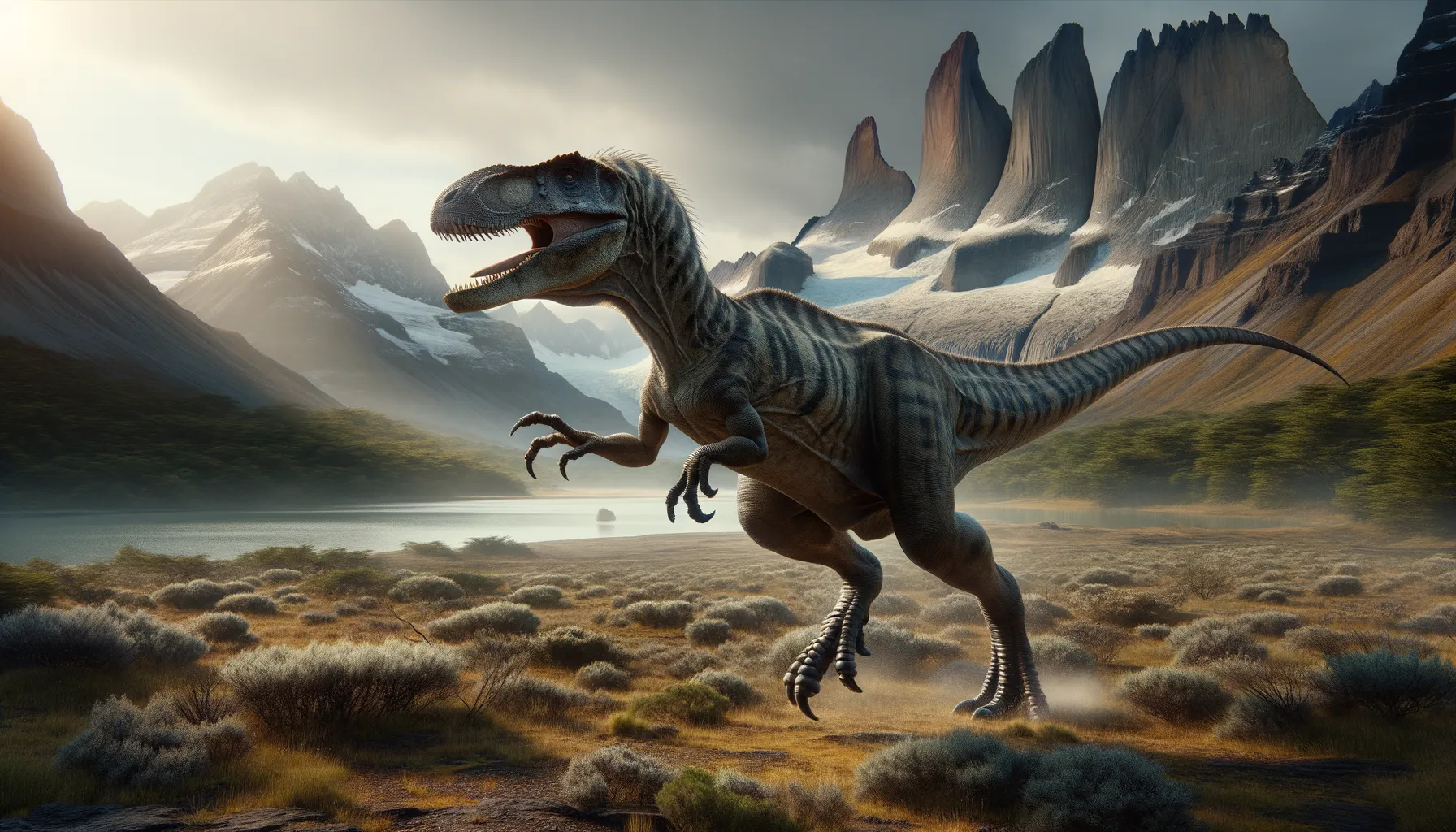
Murusraptor
Swift predator of the Cretaceous plains.
Period
triassic
Length
Measured about 7 meters in length.
Height
Stood roughly 3 meters tall.
Weight
Weighed around 500 kilograms.
Murusraptor was a medium-sized theropod dinosaur that roamed the Earth during the Cretaceous period. Known for its agility, Murusraptor was a formidable predator. The discovery of this dinosaur in Patagonia has provided valuable insights into the diversity of theropods in South America. Its well-preserved fossils reveal much about its anatomy and lifestyle, contributing to our understanding of dinosaur evolution.
Diet
As a carnivorous dinosaur, Murusraptor primarily hunted small to medium-sized dinosaurs and other animals. Its diet likely consisted of a variety of prey, which it pursued with its keen sense of smell and sight.
Hunting
Murusraptor was likely a solitary hunter, relying on stealth and speed to capture its prey. Its sharp claws and teeth would have been effective tools for securing and dispatching its meals.
Environmental challenges
Living during the Cretaceous period, Murusraptor faced challenges such as competition for food resources with other carnivores and fluctuating climate conditions. These environmental pressures may have influenced its hunting strategies and migrations. Adaptations such as speed and agility likely helped it survive in this dynamic landscape.
Speed
It was relatively fast, likely agile in pursuit.
Lifespan
Estimated to live up to 20 years.
First discovery
Discovered in 2016 in Patagonia, Argentina.
Fun Facts
- Murusraptor was a medium-sized carnivorous dinosaur that lived during the Late Cretaceous period in what is now Argentina.
- Its name, Murusraptor, means 'wall thief,' referring to the discovery of its fossils in the Sierra Barrosa, a region known for sedimentary 'walls' of rock.
- Murusraptor belonged to the megaraptorid family, which is known for having large claws on their hands rather than their feet.
- This dinosaur is estimated to have been about 6.5 meters (21 feet) long, making it a formidable predator of its time.
- The discovery of Murusraptor added important information about the diverse ecosystem that existed in South America during the Cretaceous period.
- Unlike some other theropods, Murusraptor had a long, narrow skull with unique features that helped paleontologists distinguish it from relatives.
- Fossils of Murusraptor were first unearthed in 2001, but it took several years of study before it was officially named and described in 2016.
Growth and Development
Murusraptor hatched from eggs, like other theropods, and underwent considerable growth to reach its adult size. Juveniles likely grew rapidly to avoid predation. Development involved changes in body proportions and strength, enabling the dinosaur to become an efficient predator as it matured.
Habitat
Murusraptor inhabited the semi-arid regions of what is now Patagonia, with a landscape that supported diverse plant and animal life. River systems would have provided water sources and fertile grounds for finding prey. The regions were likely separated by rugged terrain, influencing the dinosaur's distribution.
Interaction with other species
Murusraptor coexisted with a variety of other dinosaur species, including herbivores and fellow carnivores. Competition for prey might have led to territorial disputes. It may have played a role in regulating populations of smaller dinosaurs, contributing to the ecological balance.
Natural lifespan
Murusraptor had a natural lifespan of about 20 years.
Reproduction
Reproduction involved laying eggs, likely in carefully selected nesting sites. Parental care might have included guarding the nest from predators. Hatchlings faced numerous threats and required continued growth for survival.
Social behaviour
While primarily solitary, Murusraptor might have occasionally formed groups, particularly during the breeding season. Social interactions were likely limited, focusing more on reproduction and territory defense.
Fossil locations
Fossils of Murusraptor have been found in the Neuquén Province of Argentina. The well-preserved skeletal remains offer insight into its physical structure and lifestyle. Continued excavations in the region may uncover more about its ecology and evolution.
